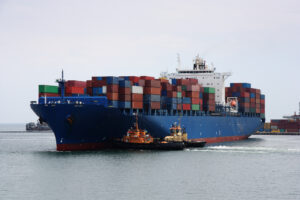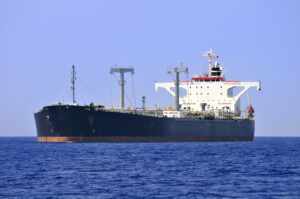
Photo credit: Clarksons (image: Kenneth Tveter, Head of Glarksons Green Transition Team )
London-based Clarksons covering shipbroking, research, finance, digital tools, port services and green-driven advisory services, has warned that speed reduction for CII improvement is “grossly overestimated.”
The operational measure adopted by the IMO, Carbon Intensity Indicator (CII), came into effect at the start of the year. As a result, a large share of the global fleet is expected to reduce sailing speed in order to comply, which would impact asset values.
The London-based company said its green transition team has conducted break-through analysis that demonstrates that many of the traditional methodologies being relied upon for decision-making are inaccurate.
Therefore the shipbroking firm advises its clients to “re-look at any CII-related decisions and how calculations are being made to ensure that they are maximising the upside potential of vessel utilisation and mitigating downside risk as far as possible.”
The Clarksons green transition team, headed up by Kenneth Tveter, argue that CII improvement potential as a result of speed reduction can be grossly overestimated and that it will not necessarily improve CII ratings.
Lead analyst for the team, Jon Leonhardsen explains “The reason for the misconception is that calculations are based on textbook speed-consumption curves which have an exponential growth across an entire speed range. However, if you factor in all of the consumers of a ship and the variables of real-world sailing conditions, the curve becomes less exponential (or flatter) at lower speeds.”
Kenneth Tveter concludes “This means that the marginal fuel-saving for distance sailed becomes lower, and this is ultimately what matters for CII performance. So, whilst some ships are needing to slow down significantly to comply, for others speed reduction isn’t viable at all and other costly measures and improvements need to be done. In summary, imprecise understanding of the relationship between speed and CII can create a false impression of the CII improvement toolbox.”
The firm claims that its Green Transition team has launched a “new CII Assessment Modelling tool that, in some instances, has proven to be 30% more accurate than traditional modelling methodologies in predicting real-world fuel consumption, and CII, especially at lower speeds.”
Furthermore the firm welcomes the introduction of measures that will help to ensure the industry can become greener and reduce its overall contribution to CO2 emissions, as it is said.
The head of the Green transition team, Kenneth Tveter points out that the “ultimate goal is to provide the industry with a new, accurate and reliable way of operating within CII effectively. Only through clarity and standardisation of approach can the industry truly start to make smarter and cleaner decisions, for voyage deployment and fleet renewal strategies, that will have a meaningful impact on decarbonisation goals.”


